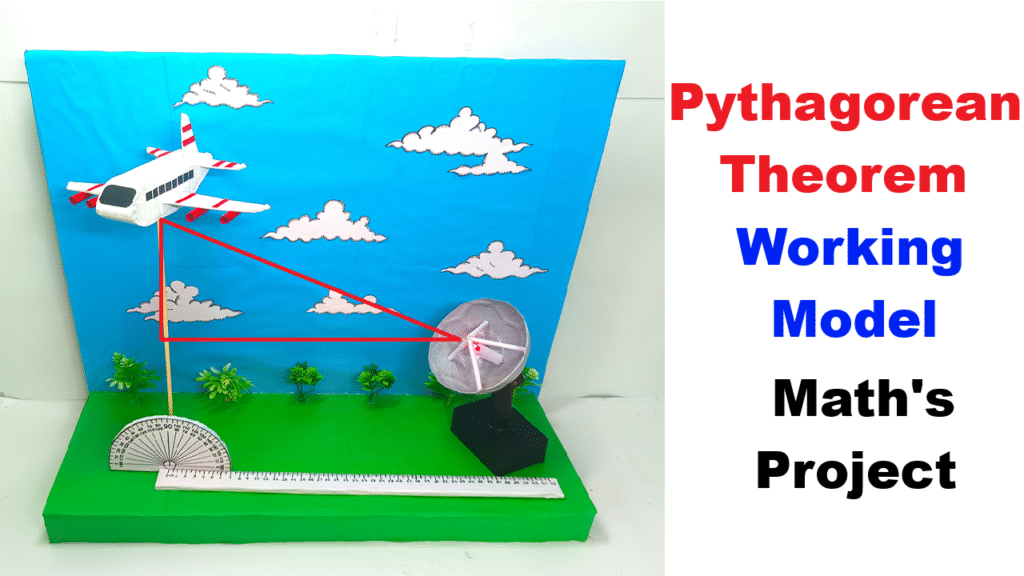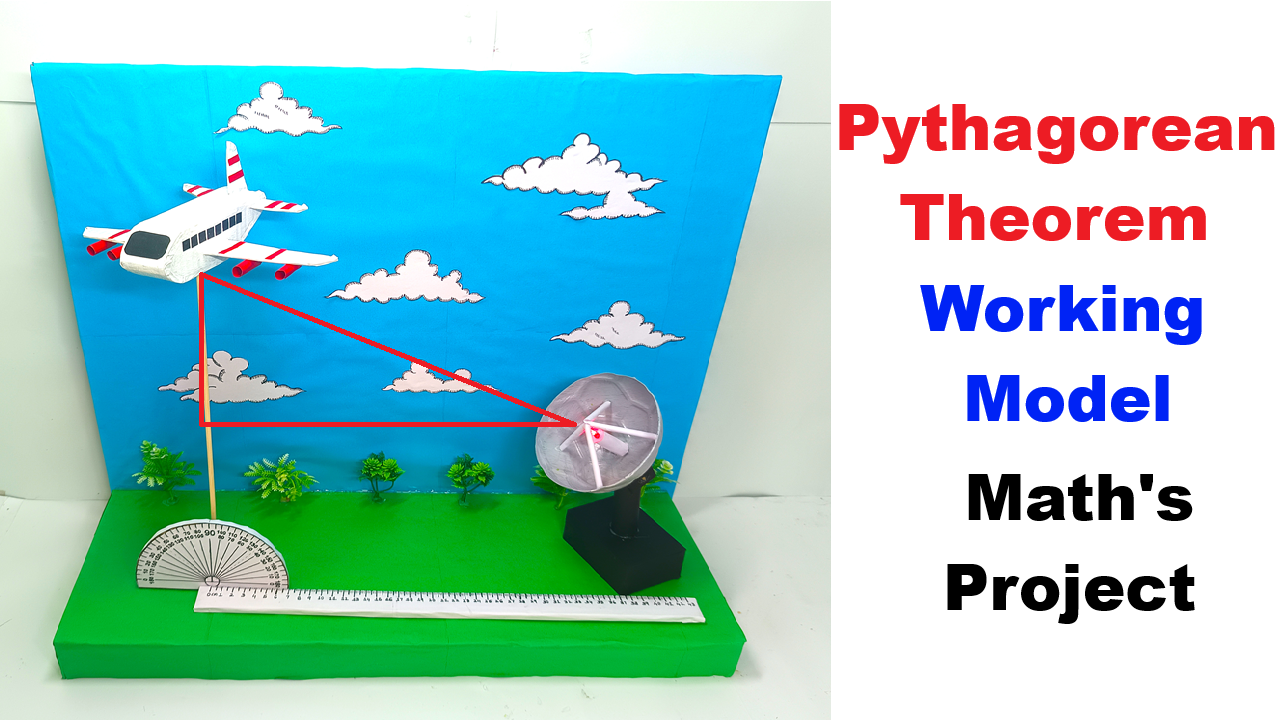Pythagorean Theorem Working Model – Science Exhibition
Introduction
The Pythagorean Theorem is one of the most important concepts in mathematics and geometry. It states that:
a2+b2=c2
a^2 + b^2 = c^2
a2+b2=c2
Here, a and b are the lengths of the two perpendicular sides of a right-angled triangle, and c is the hypotenuse (the side opposite the right angle).

This theorem has practical applications in navigation, construction, radar systems, aviation, and surveying. For a science exhibition, we can build a working model using an aeroplane, radar system, scale, and protractor to demonstrate how the theorem is applied in real life.
Materials Required
- Cardboard sheet (base)
- Toy aeroplane (plastic or paper)
- Small radar model (can be made with cardboard and a rotating stick)
- Scale (ruler)
- Protractor
- Colored markers, thread, and pins
- Glue and tape
Video Construction Steps
- Base Setup – Use cardboard as the platform. Place a radar station at one corner.
- Airplane Placement – Suspend or fix a toy airplane at some height using a stick or thread to represent its flying position.
- Right Triangle Formation –
- From the radar, draw a horizontal line to represent the ground distance (side ‘a’).
- Draw a vertical line from the airplane down to the ground (side ‘b’).
- Connect the airplane to the radar with a diagonal line (side ‘c’ – hypotenuse).
- This forms a right-angled triangle.
- Measuring – Use the scale to measure ‘a’ and ‘b’, then calculate ‘c’ using the theorem.
- Verification – Compare the calculated ‘c’ with the actual measured hypotenuse line using the scale.
- Protractor Use – Show how angles (altitude angle of the airplane) can also be measured to enhance understanding.
Example 1 – Airplane and Radar
- Suppose the airplane is flying at a height of 3 km (vertical side ‘b’).
- The radar detects that the airplane is 4 km away horizontally (side ‘a’).
- By Pythagoras: c2=a2+b2=42+32=16+9=25
- c^2 = a^2 + b^2
- = 4^2 + 3^2
- = 16 + 9 = 25
- c2=a2+b2
- =42+32
- =16+9=25
- c=5 km
- So, the radar finds the direct distance to the airplane is 5 km.

